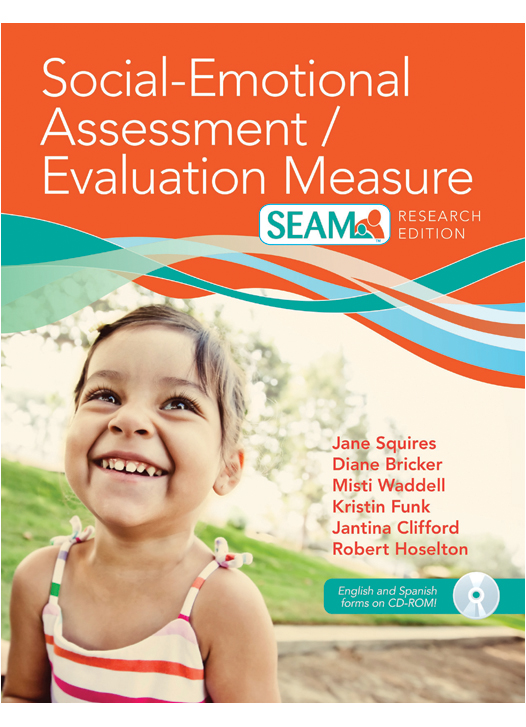Related Products
For Professionals
- Amplification
- Assessment of Student Skills, Challenges, Needs
- Early Childhood: Infants, Toddlers, Preschool
- Hearing Loss – Identification, Impact and Next Steps
- IDEA Law Summary Information
- Language and Speech Development Issues
- Legal Issues in Serving Children with Hearing Loss
- Listening (Auditory Skills) Development
- Planning to Meet Student Needs
- Self-Advocacy Skills for Students with Hearing Loss
- Self-Concept: How the Child with Hearing Loss Sees Himself
- Social Skills
- Speech Perception & Learning
Related Teacher Tools Takeout Items
Self-Concept: Assessment & Strategies for Adolescents
Adolescence – A Challenging Time for Self-Concept
Self-concept reflects how an adolescent evaluates himself or herself in domains (or areas) in which he or she considers success important. Problems and difficulties can lower self-concept; but low self-concept can also cause problems. An adolescent can have a positive self-concept in some domains and a negative self-concept in others. Research also suggests that each individual has a global (or overall) self-concept that reflects how the individual evaluates his or her self-worth as a whole.

Children in the United States tend to experience a decline in positive self-concept during their adolescent years. This decline often begins around age 12 for girls and around age 14 for boys. For some, the decline can become severe in early adolescence (between the ages 14 and 16) before generally recovering in the mid-teen years. Having a negative self-concept during adolescence has been associated with maladaptive behaviors and emotions. In contrast, having a positive self-concept has been linked to positive social and emotional development.
Because negative self-concept in adolescence has been associated with various maladaptive behavioral and emotional problems, it is important to address signs of negative self-concept in youth. Due to this it is important to assess the various domains that make up self-concept, especially for adolescents at risk.
The report
Psychological Affects of Hearing Loss In Teens
provides insights, especially for children who have recently lost their hearing.
The Deafness Doesn’t Define You : How to Excel this School Year
Quick Assessment of Self-Concept for Adolescents

The
Think About It Quiz
was developed for use with adolescents and focuses on five areas or domains in which this population typically judges themselves against their peers: Athletic Competence, Conduct/Morality, Peer Acceptance, Physical Appearance, and Scholastic Competence. Easy to score, the
Think About It Quiz
can identify if a student has a negative self-concept in one or more of these domains.
By determining the specific issues related to negative self-concept, school staff and parents can use a variety of strategies to help adolescents combat any negative views that they may hold about themselves. By intervening to improve adolescents’ self-concepts it is possible to influence the social, academic, and behavioral adjustment of adolescents at a critical time in their development.
Strategies to Help Adolescents Improve Level of Self-Concept
Strategies that can be used to improve an adolescent’s self-concept include providing praise for accomplishments, praising effort, working with the individual to encourage improvement in areas where he or she feels deficient, and refraining from using negative feedback.

•
Strategy 1: Praise the adolescent’s accomplishments in specific domains. Specifically, praise the adolescent’s successes. Feedback is most effective when it addresses the role that the adolescent played in producing positive outcomes. For example, rather than simply saying “It’s great that you got a good grade on your paper,” bring up the adolescent’s actions and abilities by saying “You worked so hard on that paper, and you really deserve the good grade that you got.”
•
Strategy 2: Praise the adolescent’s efforts. Research suggests that children who focus on improving their skills gain self-worth through growth. In contrast, children who only focus on achievements base their self-worth solely on their successes and failures. Parents and school staff should praise adolescents’ efforts and improvement in skills, in addition to the praise directed towards their accomplishments.

•
Strategy 3: Work with the adolescent to improve skills in domains in which he or she feels deficient. Parents and school staff must first work with youth to identify and discuss elements of tasks that show room for improvement. Guidance, support, and resources needed can then be provided to accomplish this improvement. Strategies include helping adolescents practice skills, giving them tips, or suggesting relevant ways or resources they can use to enhance skills. Recognize that skill training is typically only effective when it is used in conjunction with positive feedback.
•
Strategy 4: Refrain from negative comments or feedback. Research finds that praise and positive reinforcement are more effective in changing behavior and sustaining positive behavior. Avoid making negative comments or giving negative feedback to a child. Instead, describe and praise what they should do, rather than what they should not do.
Source: Child Trends is a nonprofit, nonpartisan research center that studies children at every stage of development. Its mission is to improve outcomes for children by providing research, data, and analysis to the people and institutions whose decisions and actions affect children.
http://www.childtrends.org/files/child_trends-2008_08_20_rb_selfconcept.pdf
- O’Mara, A.J., Marsh, H.W., Craven, R.G., & Debus, R.L. (2006). Do self-concept interventions make a difference? A synergistic blend of construct validation and meta-analysis. Educational Psychologist, 41, 181-206. [Strategy 1]
- Dweck, C.S., & Leggett, E.L. (1988). A social-cognitive approach to motivation and personality. Psychological Review, 95, 256-273. [Strategy 2]
- Maag, J.W., & Kotlash, J. (1994). Review of stress inoculation training with children and adolescents: Issues and recommendations. Behavior Modification, 18, 443-469. [Strategy 4]
Posted by Karen L. Anderson, PhD, Supporting Success for Children with Hearing Loss, March 26, 2013.
Updated January 2016.



